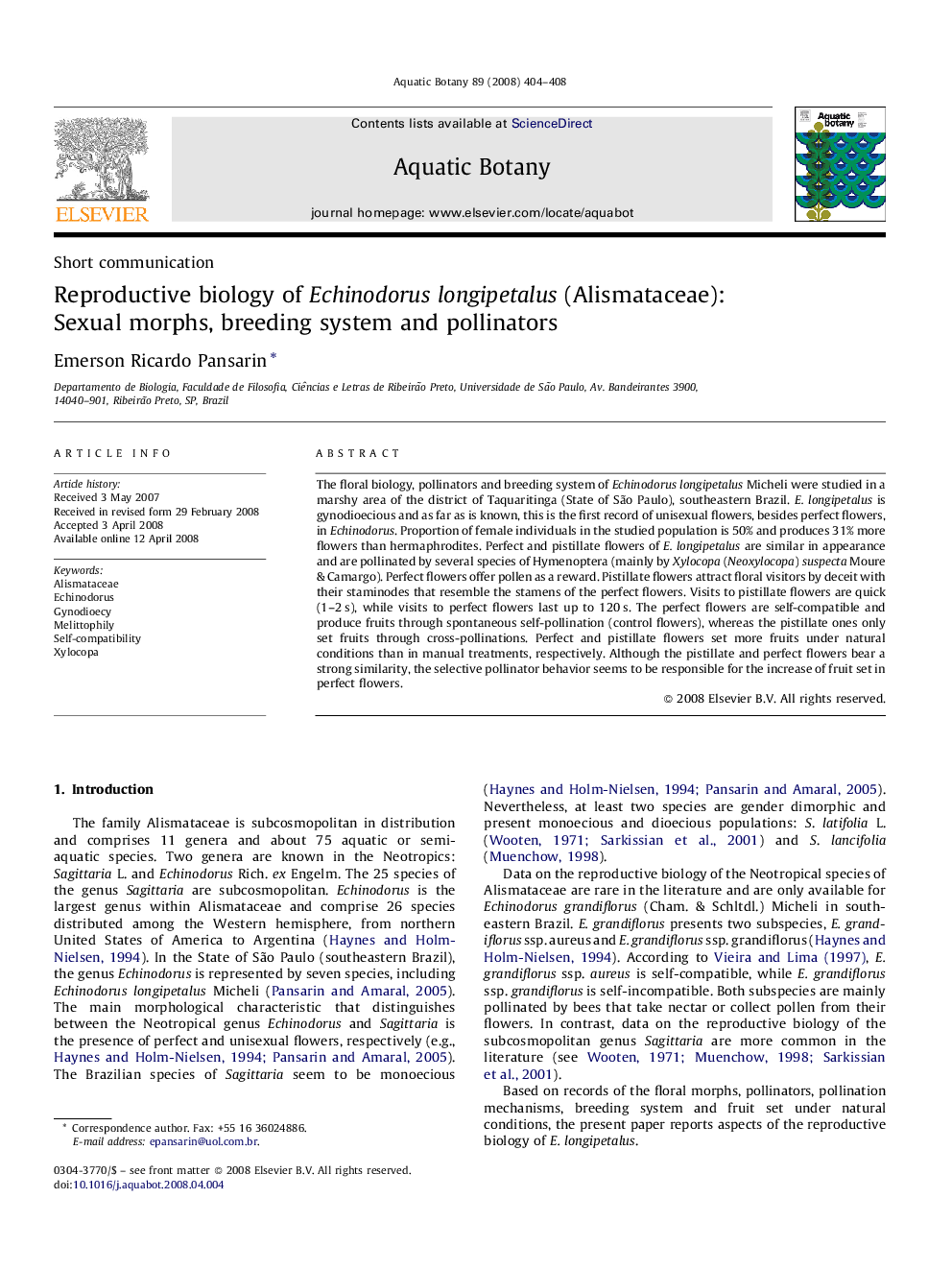| کد مقاله | کد نشریه | سال انتشار | مقاله انگلیسی | نسخه تمام متن |
|---|---|---|---|---|
| 4528390 | 1324304 | 2008 | 5 صفحه PDF | دانلود رایگان |

The floral biology, pollinators and breeding system of Echinodorus longipetalus Micheli were studied in a marshy area of the district of Taquaritinga (State of São Paulo), southeastern Brazil. E. longipetalus is gynodioecious and as far as is known, this is the first record of unisexual flowers, besides perfect flowers, in Echinodorus. Proportion of female individuals in the studied population is 50% and produces 31% more flowers than hermaphrodites. Perfect and pistillate flowers of E. longipetalus are similar in appearance and are pollinated by several species of Hymenoptera (mainly by Xylocopa (Neoxylocopa) suspecta Moure & Camargo). Perfect flowers offer pollen as a reward. Pistillate flowers attract floral visitors by deceit with their staminodes that resemble the stamens of the perfect flowers. Visits to pistillate flowers are quick (1–2 s), while visits to perfect flowers last up to 120 s. The perfect flowers are self-compatible and produce fruits through spontaneous self-pollination (control flowers), whereas the pistillate ones only set fruits through cross-pollinations. Perfect and pistillate flowers set more fruits under natural conditions than in manual treatments, respectively. Although the pistillate and perfect flowers bear a strong similarity, the selective pollinator behavior seems to be responsible for the increase of fruit set in perfect flowers.
Journal: Aquatic Botany - Volume 89, Issue 4, November 2008, Pages 404–408